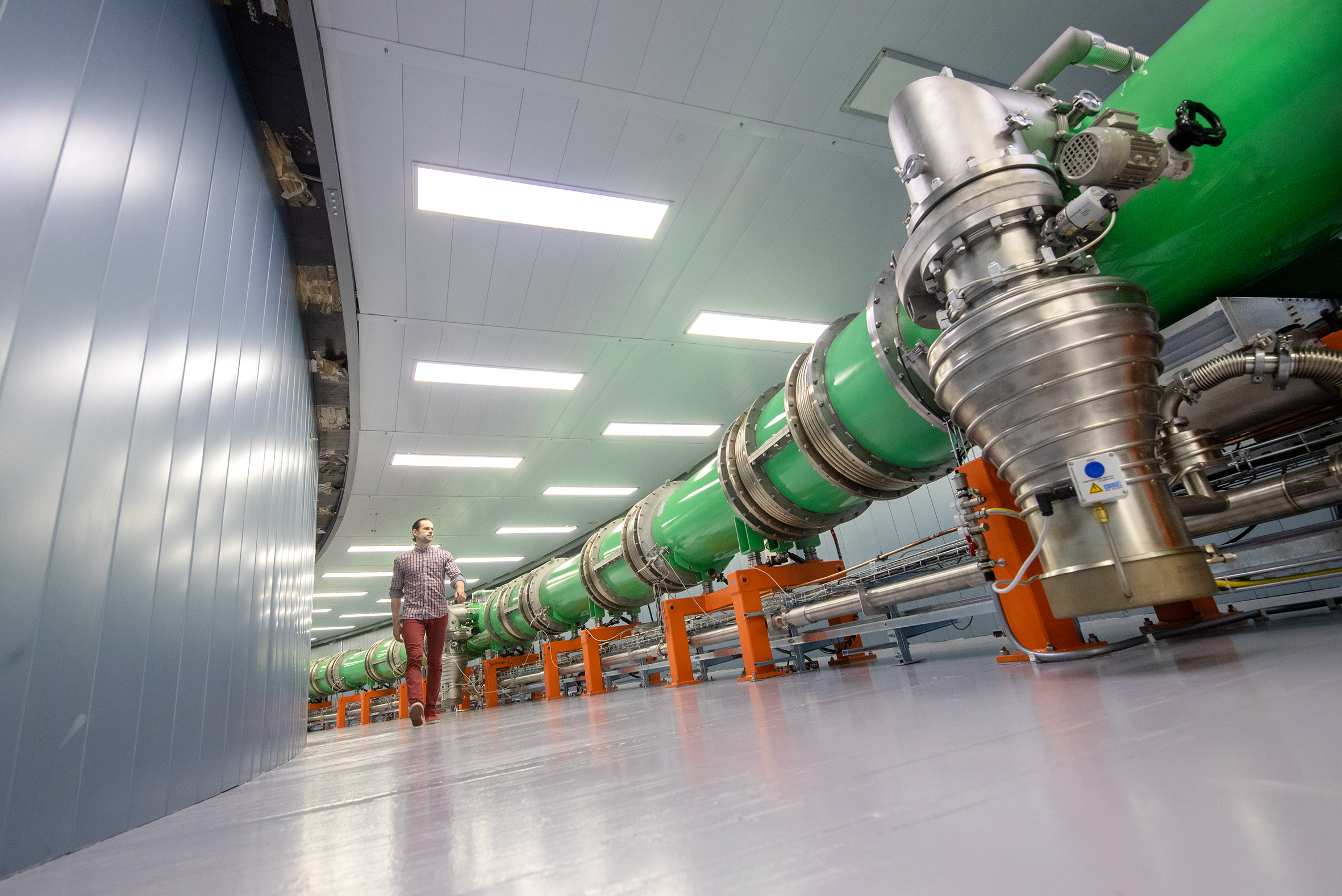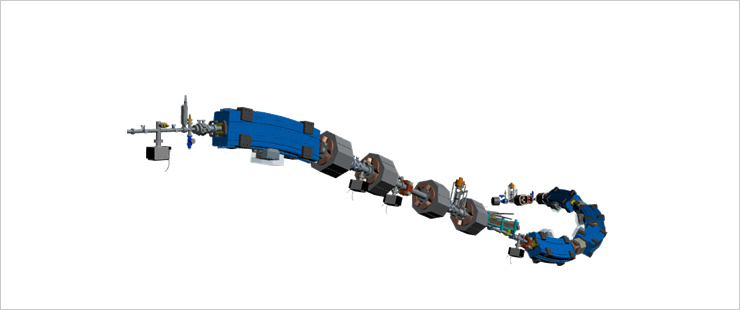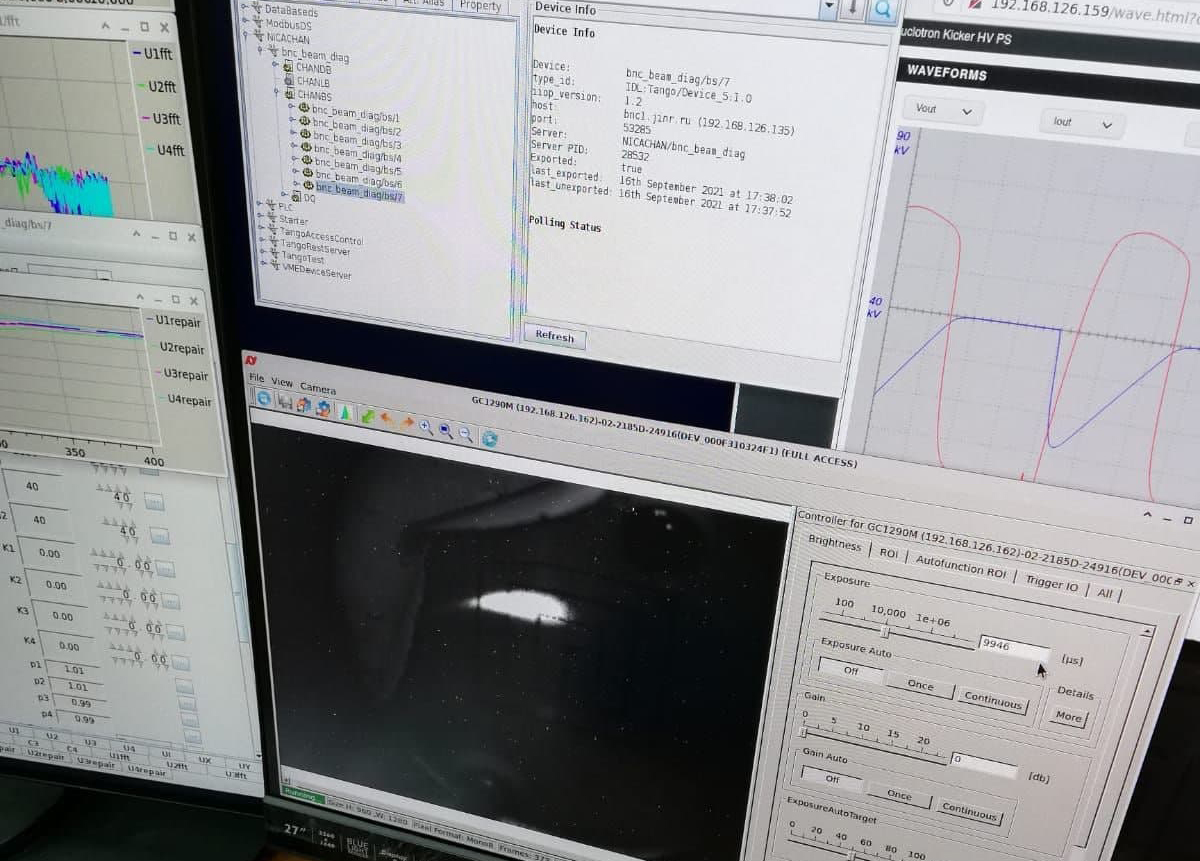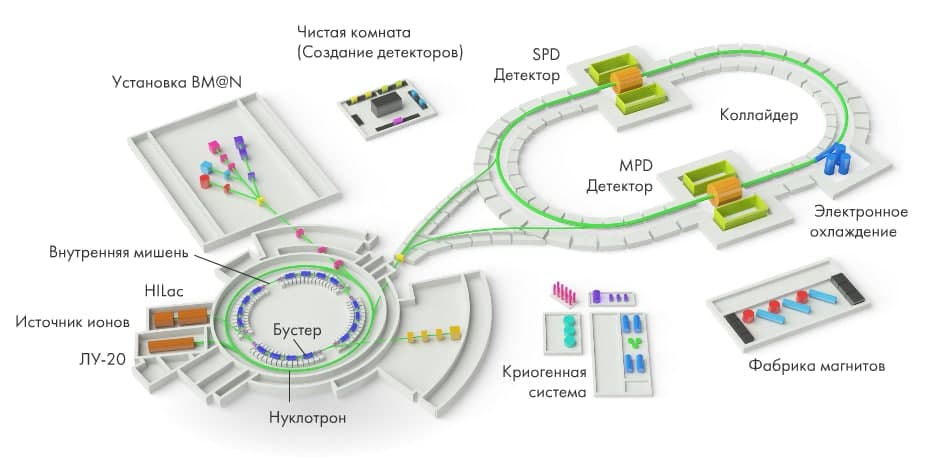Beam successfully transported from Booster to Nuclotron
Media, 23 September 2021
Within the framework of the commissioning, a beam of iron ions extracted from the Booster of the NICA complex has been successfully transported through the Booster-Nuclotron channel. The goal of the commissioning is to start the physical experiment and launch the injection complex of the collider (the linear accelerator with the Booster and the Nuclotron) in the full configuration by December 2021. Moreover, specialists measured the radiation background around the injection complex in different operating modes to confirm the correctness of taken project decisions on the creation of biological protection.
During September 2021, cooling of the superconducting magnet system of the Booster was carried out and the commissioning cycle at the new-generation ring accelerator continued in the Veksler and Baldin Laboratory of High Energy Physics JINR. Operation modes of the accelerator were first adjusted and all the subsystems of the complex physical facility were tested. Then the test beam extracted from the Booster was successfully transported through the Booster-Nuclotron channel.
Deputy Director of the Veksler and Baldin Laboratory of High Energy Physics, Candidate of Technical Sciences Andrey Butenko commented on the preparation for carrying out the physical experiment scheduled for December with the use of systems of the NICA complex: the linear heavy-ion accelerator, the Booster, and the Nuclotron.
He noted that specialists carried out the physical launch and tested all the major systems of the complex: injection, electronic cooling, extraction, and transportation of the beam to the Nuclotron produced and assembled jointly with colleagues from the INR SB RAS.
“Until the morning of 20 September, we used light helium ions for the commissioning. Then we switched to iron ions Fe⁺¹⁴. Such heavy ions may not only be successfully used for fundamental studies but are also very “beneficial” for the bulk of the experiments related to space flights, testing of electronics components, radiobiological research, and other applied tasks. By 23 September, we finished the commissioning cycle by transporting the heavy iron ion beam to the Nuclotron,” Andrey Butenko said.
In addition, he noted that this cycle will result in the completion of a number of agreements, including with the INR SB RAS ( Novosibirsk) on joint design, production, assembling, and testing of equipment for the Booster-Nuclotron transport channel, as well as some agreements on power supply systems that have shown to be successful and a number of other significant subsystems – engineering systems, water cooling systems, and others.
“The commissioning serves the major goal of transporting the beam from the Nuclotron and then starting the physical experiment and launching the linear accelerator together with the Booster and the Nuclotron by December. We have only two months left to finish and install the system of injection into the Nuclotron. The injection system will consist of two unique devices: the Lambertson magnet and the kicker (pulsed magnetic kicker). They are at the stage of completing the assembling and preparing for tests. In November, these two elements should be installed at the Nuclotron, and then we will be ready to launch the physical experiment with the linear accelerator of heavy ions, the Booster, and the Nuclotron,” Andrey Butenko said.
Furthermore, on 21 – 22 September, field measurements of the radiation background around the Booster were carried out. In the future, the results will be included in the package of documents for obtaining the sanitary and expert conclusion of the FMBA of Russia on compliance of working conditions with sources of ionizing irradiation with sanitary rules and a permit for the operation of the facility.
On 23 September, all the systems are stopped for final debugging.



